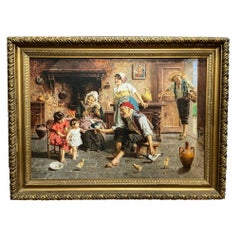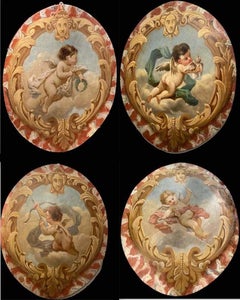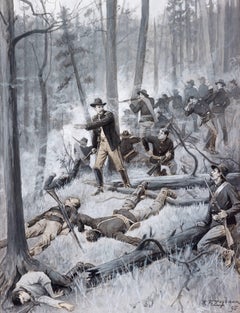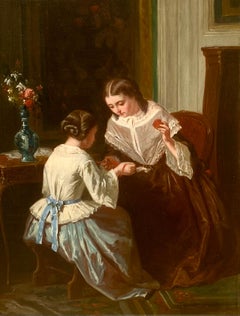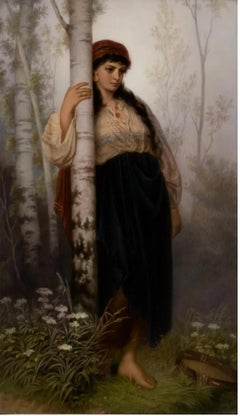19th Century Figurative Paintings
19th Century Figurative Paintings
Linen, Oil
French School 19th Century Figurative Paintings
Canvas, Oil
19th Century Figurative Paintings
Oil
19th Century Figurative Paintings
Gouache, Laid Paper
Hudson River School 19th Century Figurative Paintings
Oil, Board
19th Century Figurative Paintings
Porcelain
Romantic 19th Century Figurative Paintings
Canvas, Oil
19th Century Figurative Paintings
Canvas, Oil
19th Century Figurative Paintings
Oil, Board
19th Century Figurative Paintings
Canvas, Oil
19th Century Figurative Paintings
Canvas, Oil
19th Century Figurative Paintings
Porcelain, Paint
19th Century Figurative Paintings
Oil, Board
19th Century Figurative Paintings
Oil, Wood Panel
Romantic 19th Century Figurative Paintings
Oil, Canvas
19th Century Figurative Paintings
Canvas, Oil
19th Century Figurative Paintings
Canvas, Oil
English School 19th Century Figurative Paintings
Canvas, Oil
19th Century Figurative Paintings
Wood, Paper
19th Century Figurative Paintings
Canvas, Wood
19th Century Figurative Paintings
Canvas
19th Century Figurative Paintings
Wood, Oil
19th Century Figurative Paintings
Porcelain, Wood
19th Century Figurative Paintings
Canvas, Oil
Impressionist 19th Century Figurative Paintings
Oil
19th Century Figurative Paintings
Gouache, Board, Pencil
19th Century Figurative Paintings
Canvas, Oil
19th Century Figurative Paintings
Paper, Watercolor
19th Century Figurative Paintings
Porcelain
19th Century Figurative Paintings
Oil, Wood Panel
19th Century Figurative Paintings
Canvas, Oil
19th Century Figurative Paintings
Canvas, Oil
19th Century Figurative Paintings
Porcelain
19th Century Figurative Paintings
Canvas, Oil
19th Century Figurative Paintings
Wood, Paper, Watercolor
19th Century Figurative Paintings
Oil, Panel
Romantic 19th Century Figurative Paintings
Oil
19th Century Figurative Paintings
Porcelain
Academic 19th Century Figurative Paintings
Canvas, Oil, Cardboard
Italian School 19th Century Figurative Paintings
Oil, Canvas, Wood
19th Century Figurative Paintings
Watercolor, Gouache, Archival Paper
Other Art Style 19th Century Figurative Paintings
Canvas
19th Century Figurative Paintings
Oil, Panel
19th Century Figurative Paintings
Porcelain
Qing 19th Century Figurative Paintings
Mirror, Paint
Qing 19th Century Figurative Paintings
Mirror, Paint
Realist 19th Century Figurative Paintings
Watercolor, Cardboard
19th Century Figurative Paintings
Canvas, Oil
Romantic 19th Century Figurative Paintings
Canvas, Oil
19th Century Figurative Paintings
Canvas, Oil
19th Century Figurative Paintings
Oil
19th Century Figurative Paintings
Canvas, Oil
Romantic 19th Century Figurative Paintings
Oil
19th Century Figurative Paintings
Canvas, Oil
19th Century Figurative Paintings
Canvas, Oil
19th Century Figurative Paintings
Porcelain, Paint, Glaze
19th Century Figurative Paintings
Canvas, Oil
19th Century Figurative Paintings
Fabric, Ink, Pigment
19th Century Figurative Paintings
Fabric, Ink, Pigment
Romantic 19th Century Figurative Paintings
Oil
Read More
See Kent Monkman’s Magical Realist Take on Frontier History
With a solo show at the Denver Art Museum and a commission from the Met, the Cree Canadian painter has become an international sensation.
Cecilia Vicuña Merges Politics, Science and Spirituality in Her Poetic Art
The Chilean creator, who has been living in exile in New York for decades, is having a major moment, receiving the biggest exhibitions, commissions and awards an artist could dream of.
